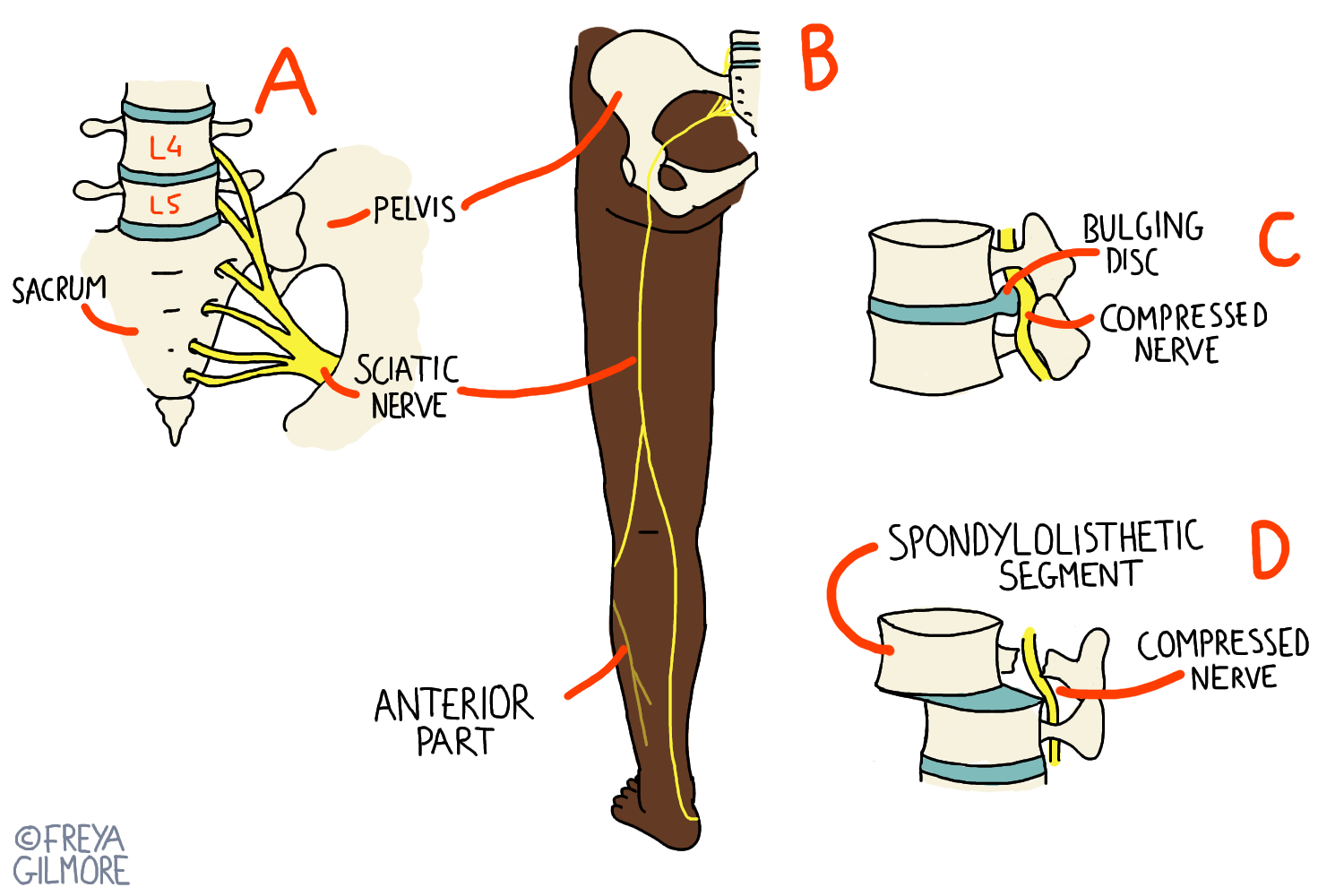03 March 2021
Sciatica

Not all pains down the back of the leg are sciatica, and pains in the arm are definitely not!

The sciatic nerve leaves the spine at the lower levels, then runs out through the pelvis, and into the back of the thigh. It splits around the knee, with one part running down the outside of the shin, and the other into the calf and foot. If you have sciatica, these are the areas you will have symptoms.
Technically, you can only have sciatica in the sciatic nerve. However, the technical term for a nerve being irritated like this is radiculopathy. You can have a radiculopathy at other spinal levels and therefore develop symptoms in the arm or elsewhere.
Symptoms of Sciatica
Symptoms can be variable, but like other irritated nerves they might include:
- pins and needles
- numbness
- shooting pains
- weakness
Weakness may be particularly hard to spot, and might only be picked up when you seek treatment for pain.
Causes
Anything that impinges on the nerve can cause sciatica. The one we often think of first is a bulging disc. Although this is a common cause, it is by no means the only one. It is also possible for a tight muscle to irritate the nerve in the same way.
The piriformis muscle is a deep muscle in the buttock. It's not very big, but it can irritate the sciatic nerve single-handedly. Anatomy varies slightly from person to person, and some people will have their sciatic nerve running right through the muscle. They likely will never know that this is the case, although it may predispose them to more frequent episodes of pain than others. When the piriformis muscle is the cause of your symptoms, it is diagnosed as Piriformis Syndrome.
Prognosis
Nerve pain can be notoriously unpredictable. Current intensity, or even the size of the area covered by your symptoms are not indicators of prognosis. Generally, the longer it has gone on for, the longer it will take to resolve.
If you suffer from repeated episodes, it may take longer for you to get over each one if the nerve is more sensitised. Your osteopath can help you work with the nerve in the treatment room and with exercises. This may even be suitable for self management when episodes first begin.
Treating Sciatica
Your osteopath will work with your body to allow the nerve to calm down. We want to address the cause, whether it's muscle, disc, or something else; and the symptoms. Calming the nerve down is important, as the body will continue to tighten up to protect itself if the pain persists- even if the cause has been addressed.
Your osteopath may give you exercises to continue your progress at home. You may also receive more advice, such as using heat or ice, and ways to get on with day to day activities without aggravating your symptoms.
Book an appointment here to start managing your sciatica
Learn more
At Ilminster Osteopathy my goal is to help people achieve their goals whatever they may be. Watch our video to find out more.

